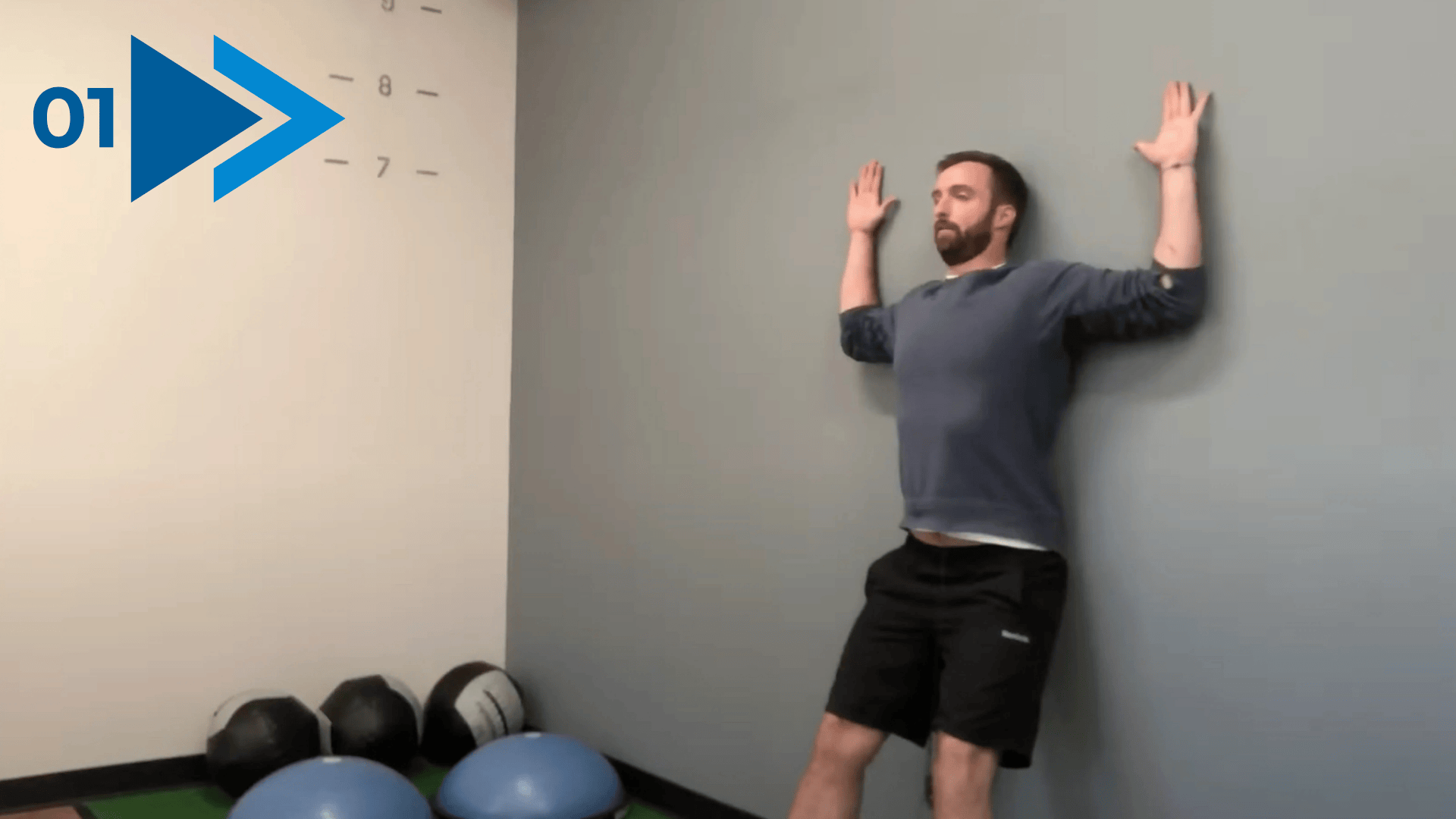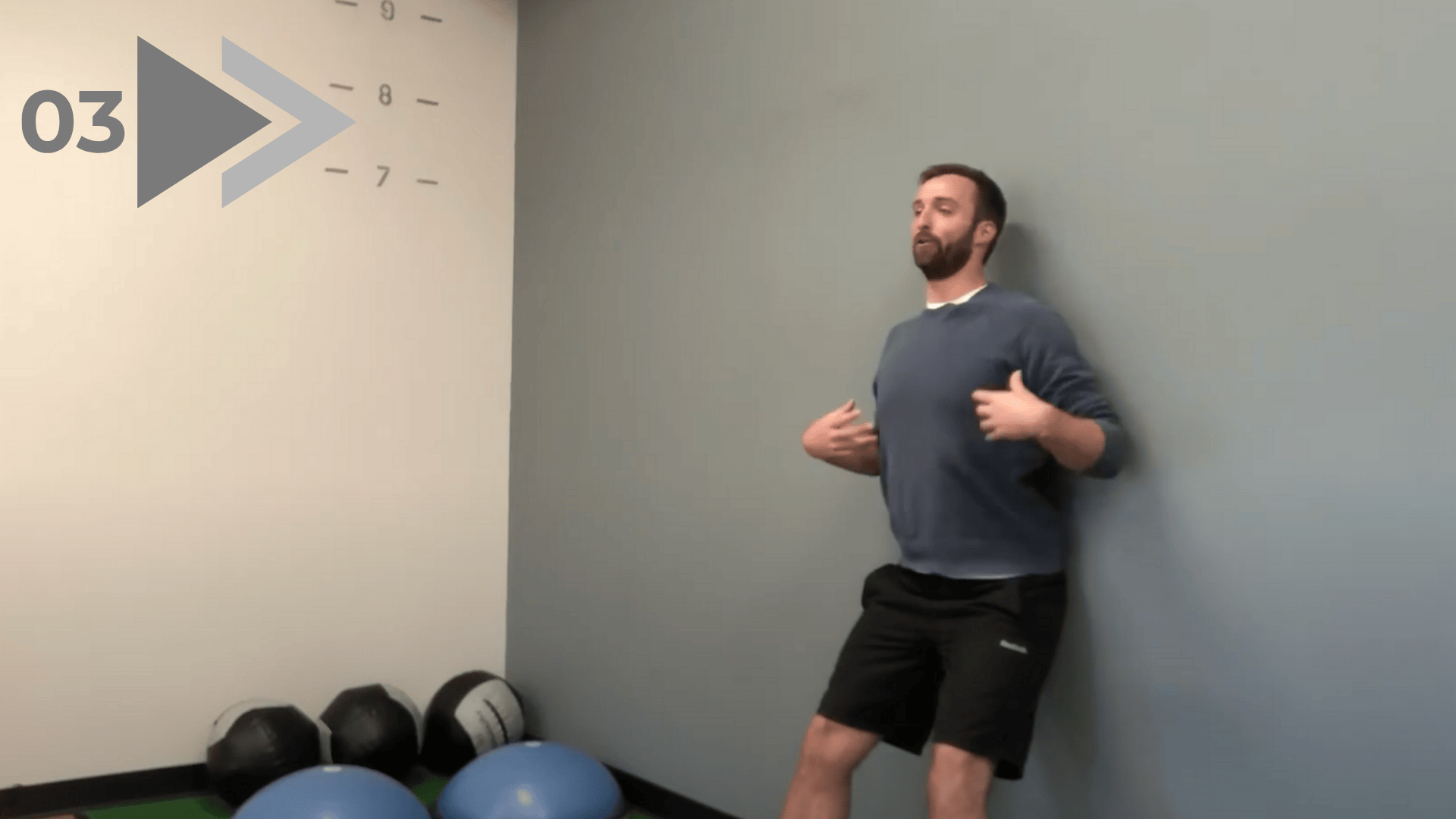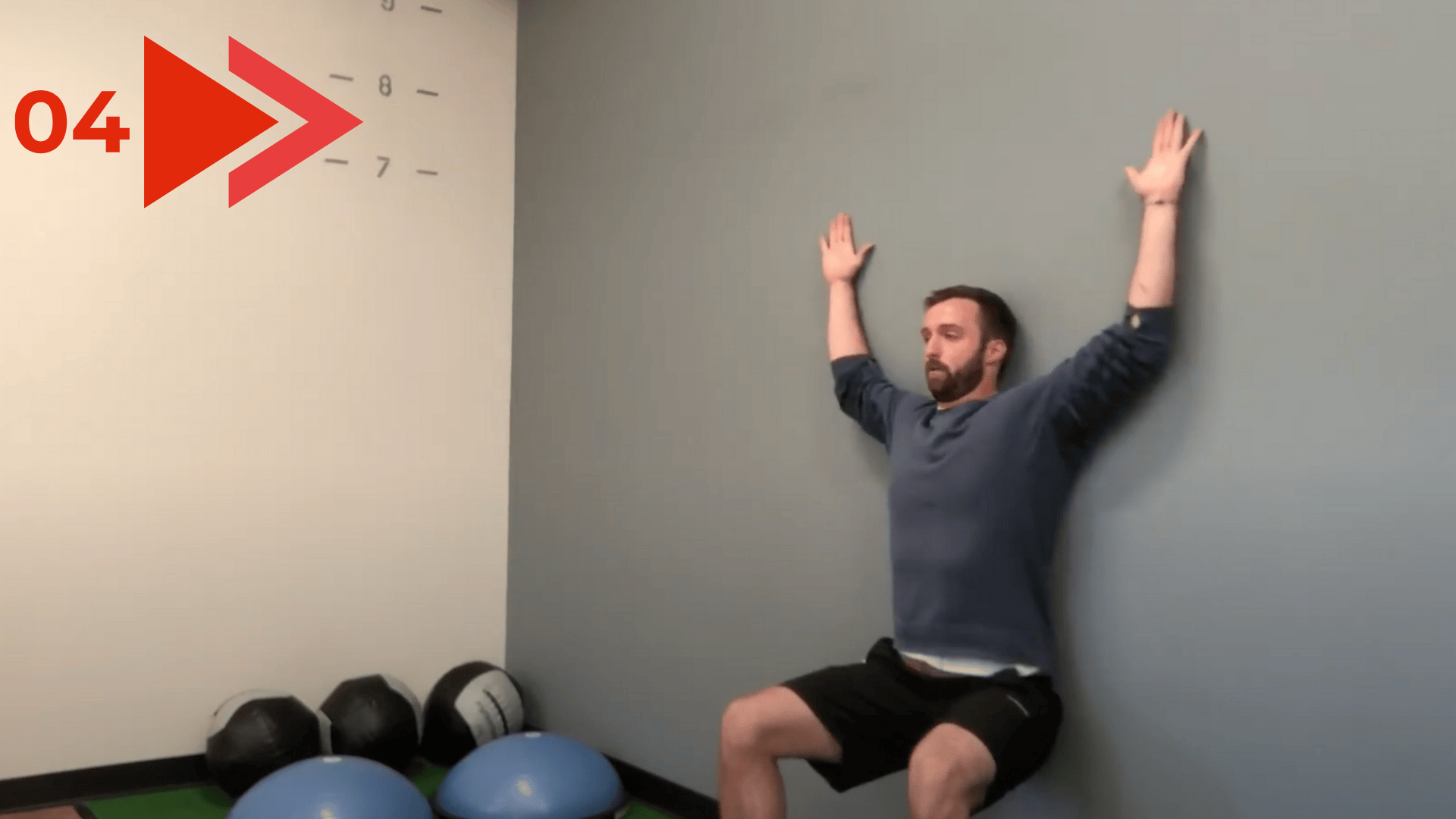I used to catch myself hunched over my laptop for hours, my shoulders rounded forward, as if I were carrying the weight of the world.
There’s this ridiculously simple exercise that can actually undo years of desk-induced damage.
Wall angel is an exercise that looks exactly like what you’d expect: standing against a wall and moving your arms up and down like you’re making snow angels, hence the name.
It’s incredibly effective for reversing that forward head posture and tight chest muscles that plague desk workers everywhere.
In this guide, I’ll walk you through exactly how to perform them correctly, common mistakes to avoid, and how to progress the exercise as you get stronger.
What are Wall Angels?
Wall angels are a mobility exercise that helps improve shoulder strength and posture. To do them, stand with your feet about 6 to 12 inches away from a wall, with your lower back, upper back, and head pressed flat against it.
Begin with your arms bent at 90 degrees, with your elbows, arms, and the backs of your hands touching the wall in a “hands-up” position.
Slowly slide your arms upward in a wide “V” shape, like making snow angels, keeping constant contact with the wall. Then lower your arms back down, engaging your shoulder blades.
This exercise strengthens the muscles that pull your shoulders back and improves shoulder mobility, making it a favorite recommendation for physical therapists to improve posture and ease upper back tension.
Wall Angels: Your Posture’s Best Friend as an Exercise

Wall angels offer several key benefits to improve shoulder and upper back health:
- Improves Shoulder Mobility and Overhead Range of Motion: Supports everyday movements like reaching and lifting by increasing flexibility and stability.
- Strengthens Upper-Back Postural Muscles: Targets rhomboids and mid/lower trapezius to help pull shoulders back and improve posture.
- Opens the Chest: Counters rounded or forward shoulders caused by prolonged sitting or desk work.
- Promotes Scapular Control and Body Awareness: Helps reduce tension and stiffness in the neck and upper back.
- Supports Shoulder Stability and Flexibility: Beneficial for those with shoulder stiffness or recovering from injury, promoting overall shoulder health.
These benefits make wall angels a highly recommended exercise for improving posture, shoulder function, and upper back strength.
What Muscles are You Actually Working?
Wall angels might look deceptively simple, but they’re secretly targeting multiple muscle groups that work together to pull your shoulders back and straighten your spine.
Here’s exactly what’s firing up during each rep:
| Muscle Group | Location | Primary Function | Role in Wall Angels |
|---|---|---|---|
| Rhomboids | Between the shoulder blades | Retract shoulder blades | Pull shoulder blades together and down |
| Middle Trapezius | Upper back | Stabilize shoulder blades | Keep shoulder blades pulled back |
| Lower Trapezius | Lower upper back | Depress the shoulder blades | Pull shoulders down from the ears |
| Posterior Deltoid | Back of the shoulders | Shoulder extension | Strengthen rear delts |
| Rotator Cuff | Deep shoulder muscles | Shoulder stability | Maintain joint positioning |
| Erector Spinae | Along spine | Spinal extension | Keep back flat against the wall |
| Deep Core | Deep abdominal | Postural stability | Maintain neutral pelvis |
Note: This coordinated muscle activation pattern is what makes wall angels particularly effective for postural correction; you’re simultaneously strengthening weakened posterior muscles while training proper movement mechanics that transfer directly to improved daily posture.
Step-by-Step: How to Do Wall Angels?
Wall Angels are an effective exercise for opening up your chest and regaining control of shoulder blade movement.
This simple yet powerful exercise helps improve posture and upper body mobility when performed correctly.
Step 1: Position Yourself Against the Wall

Stand with your back against a wall, ensuring three key contact points: your pelvis (butt), mid-back, and neck touch the wall. This creates a natural arch in your lower back.
Place your elbows, wrists, and fingers flat against the wall in a “goal post” position. Keep your ribcage tucked to avoid excessive arching away from the wall.
Step 2: Perform the Sliding Movement

Slowly slide your arms up the wall as high as comfortable, then slide them back down to the starting position. The key is maintaining contact with the wall throughout the entire movement.
Focus on controlled, smooth motions rather than speed. Keep your back position stable and avoid letting your lower back arch excessively away from the wall.
Step 3: Control Your Range of Motion

Only move within a range that allows you to maintain proper wall contact. If you’re tight in the mid-back area, you may initially have a limited range of motion, and that’s perfectly normal.
The goal is quality movement over quantity. As your mobility improves, your range will naturally increase while maintaining proper form.
Step 4: Add Intensity with Wall Sit (Optional)

For increased difficulty and full-body engagement, perform wall angels while in a wall sit position. This variation adds lower body tension and core engagement while maintaining the same upper body movement pattern.
Hold the wall sit position and perform the arm sliding motion up and down, creating additional challenge and stability requirements.
Common Mistakes & How to Fix Them
Even simple exercises can go wrong without proper technique. Here are the most frequent wall angel errors and their quick fixes to ensure you’re getting maximum benefit from this mobility exercise.
- Arching Lower Back or Losing Wall Contact: Cue posterior pelvic tilt or take feet slightly farther from the wall.
- Shoulders Hiking up or Shrugging: Focus on relaxing shoulders and actively depressing the shoulder blades.
- Hands or Wrists Not Touching the Wall: Perform farther from the wall or substitute with standing scapular squeezes.
- Moving Too Fast Through the Range: Slow down and focus on controlled, deliberate movements.
- Forcing Range Beyond Comfort: Stay within pain-free motion and let mobility improve gradually.
Master these corrections and you’ll turn wall angels from a basic stretch into a powerful postural improvement tool.
Sample Routines & Program Placement
Here’s how to strategically incorporate wall angels into your daily routine for maximum postural benefits:
| Application | Duration | When to Use | Sets/Reps | Primary Goal |
|---|---|---|---|---|
| Morning Mobility | 3-5 minutes | Upon waking | 2 x 10-15 reps | Counteract overnight stiffness |
| Pre-Workout Warm-up | 2-3 minutes | Before upper body training | 1-2 x 8-12 reps | Activate the posterior chain |
| Work Break Resets | 1-2 minutes | Every 1-2 hours at the desk | 1 x 5-10 reps | Combat forward head posture |
| Evening Wind-down | 3-4 minutes | Before bed | 2 x 12-15 slow reps | Release daily tension |
2-Week Desk Worker Progression Plan
Sitting for long hours can leave your body stiff and sore. A short, steady plan can help you move more, feel stronger, and ease the tension that builds up from desk work. Here is a plan you can follow:
| Timeline | Frequency | Variation | Volume | Weekly Focus |
|---|---|---|---|---|
| Week 1-2 | Daily | Doorframe → Standard | 2 x 8-10 → 3 x 10-12 | Form mastery, pain-free ROM |
| Week 3-4 | 5x per week | Standard + Slow eccentric | 3 x 12-15 reps | Strength and control development |
| Ongoing | 4-5x per week | Mix all variations | 2-3 x 10-15 reps | Maintenance and continued progression |
Pro Tip: Start with the variation that allows pain-free movement through full range of motion. Consistency trumps intensity, performing wall angels daily for two weeks will yield better results than sporadic advanced variations.
When Wall Angels Exercise May Not Be Right for You
While wall angels are generally safe for most people, certain conditions require modification or professional guidance before starting.
Avoid or Modify If You Have
- Acute Shoulder Pain: Sharp or severe shoulder discomfort that worsens with arm movement.
- Rotator Cuff Tears: Known partial or complete tears requiring surgical evaluation.
- Recent Shoulder Surgery: Any shoulder procedure within the past 3-6 months.
- Active Shoulder Impingement: Pinching sensation when raising arms overhead.
- Frozen Shoulder: Severely limited shoulder range of motion with stiffness.
- Chronic Neck Pain: Existing neck issues that worsen with overhead arm movements.
When to Consult a Professional
- Pain increases during or after performing wall angels
- History of recurrent shoulder dislocations or numbness/tingling in arms
Note: Always consult with a physical therapist or doctor before starting wall angels if you have any shoulder, neck, or upper back injuries. They can assess your specific situation and provide appropriate modifications.
Conclusion
To wrap it up, wall angels have become a simple staple in my routine for keeping my shoulders mobile and maintaining good posture.
They target key muscles often neglected due to prolonged sitting, and doing them regularly really helps reduce tightness and tension in my neck and upper back.
If you’re desk-bound or recovering from shoulder stiffness, this exercise can make a noticeable difference over time. I encourage you to give wall angels a try and feel how your upper body opens up and strengthens.
If you’ve already tried them or want to share your progress, please leave a comment below; I’d love to hear how this movement works for you!





